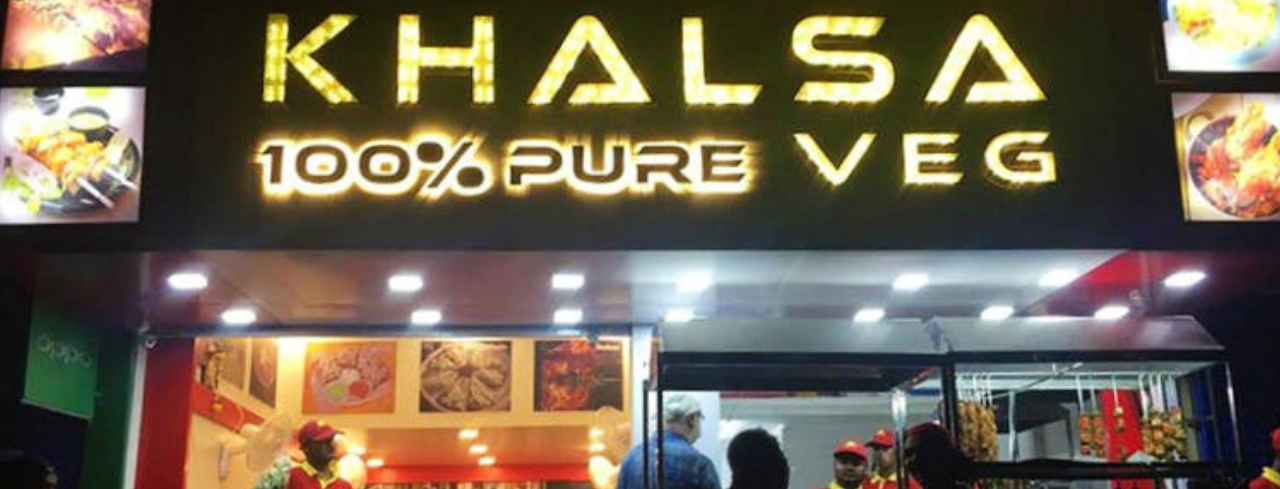Learn Your Veg From Your Non- Veg!
Until I got to India I had never heard of the term ‘Non Veg’. In the simplest terms it means food that is not considered vegetarian. In New Zealand ( and most other countries in the West) food is only labelled (and then only sometimes) if it is deemed as vegetarian. It is accepted widely that the majority of people will choose food by taste and style, not necessarily if it has some type of meat or not. In the hospitality industry, we always used to keep a few plates of food with no meat on it for those few that called themselves vegetarian. Until very recently there was very little understanding of what vegetarian food is or means.
In India Veg or Non Veg food is steeped in religion and politics and is a lot more complicated than at first glance. Restaurants freely display signs to say if they are 100% Veg or sell Veg and Non Veg food.
From my own observations, what people eat depends on a variety of factors – your religion, your caste or where you live is just the start. As in Hinduism where there are thousands of Gods/ Deities there sometimes seems to be that many types of vegetarians and non-vegetarians.
For example, Muslims tend to be Non Veg and eat chicken and mutton (goat), but not pork. Non veg Hindus don’t eat beef and Catholics pretty much eat everything unless it’s lent then they tend to be veg, with fish only on Fridays. If you are from the Punjab, you most likely eat meat, but if you are from Gujarat them most likely you don’t.
Jain’s are vegetarian and don’t eat garlic or onion ( or anything from under the ground, don’t eat eggs, but can eat dairy).
Then there are the vegetarians that don’t eat eggs or dairy and those that do. Those that are only vegetarian on Tuesdays or Thursdays or vegetarian only in India – overseas they will eat anything. Those that are vegetarian only while fasting (fasting food is a whole blog in itself!) and the list goes on. Approx. 30% of India is classified as pure vegetarian, the rest somewhere between those that eat eggs (not classified as pure vegetarian) and dairy through to those that will eat anything.
Buying food can be a bit of a science too. The majority of India still sells goods from smaller family owned stores; large chain supermarkets are in the major centres but much fewer than in the West. Gujarati’s tend to own a lot of the general food stores (at least in Mumbai) which mean’s you can buy milk but not eggs (no meat at all ). Larger supermarkets almost without exception will have all their non veg products including eggs in a separate walled off part of the supermarket.
Fish is brought from the Goan’s or Manglorean’s, many of whom are also Catholic so will also sell pork products. Bengalis also sell fish, but this tends to be the fresh water variety only. Mutton and chicken tends to be sold by Muslims, Paneer (cottage cheese) and fresh dairy by the Punjabi’s or Sindhi’s and eggs are sold in tiny roadside shops manned by immigrants from the poorer states of Uttar Pradesh or Bihar.
Beef is a sore point all over India. In many Indian states, including Maharashtra where I live, the slaughter of cows is illegal; making it difficult to buy, sell, and, as a result, eat, beef. In Maharashtra, it is now illegal to sell or be in possession of beef. Beef is avoided by most Hindu’s but eaten widely by Catholics on the Konkan coast and in the North East.
By the way before I forget, alcohol is often seen as ‘Non Veg’ so its not allowed to be sold in the majority vegetarian or dry states such as Gujarat and not allowed in pure veg restaurants. At the same time you will never find alcohol at a Muslim restaurant, but you will have plenty of eatable non -veg options available, In fact finding veg options in a Muslim area on a festival is very difficult!
So in a nutshell, check what you want to eat before you go to a restaurant – it might be a little more complicated than you think.
For the record I am mostly a vegetarian. I do eat fish and seafood, occasionally eggs and dairy. I don’t eat any animals. I do occasionally drink alcohol.
Disclaimer: This piece is only from my observations as a foreigner living in Mumbai. It is only a generic observation from my point of view.
